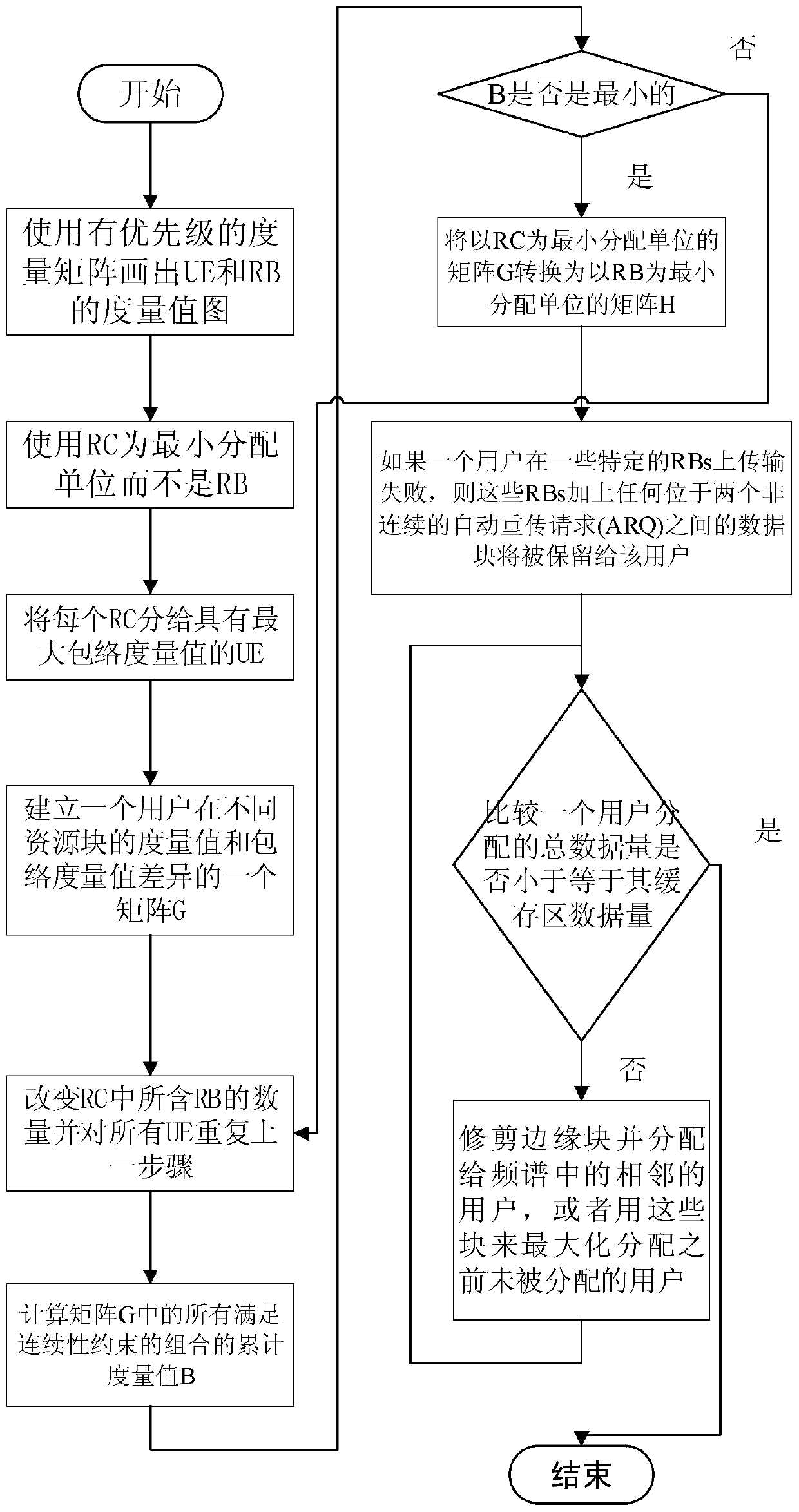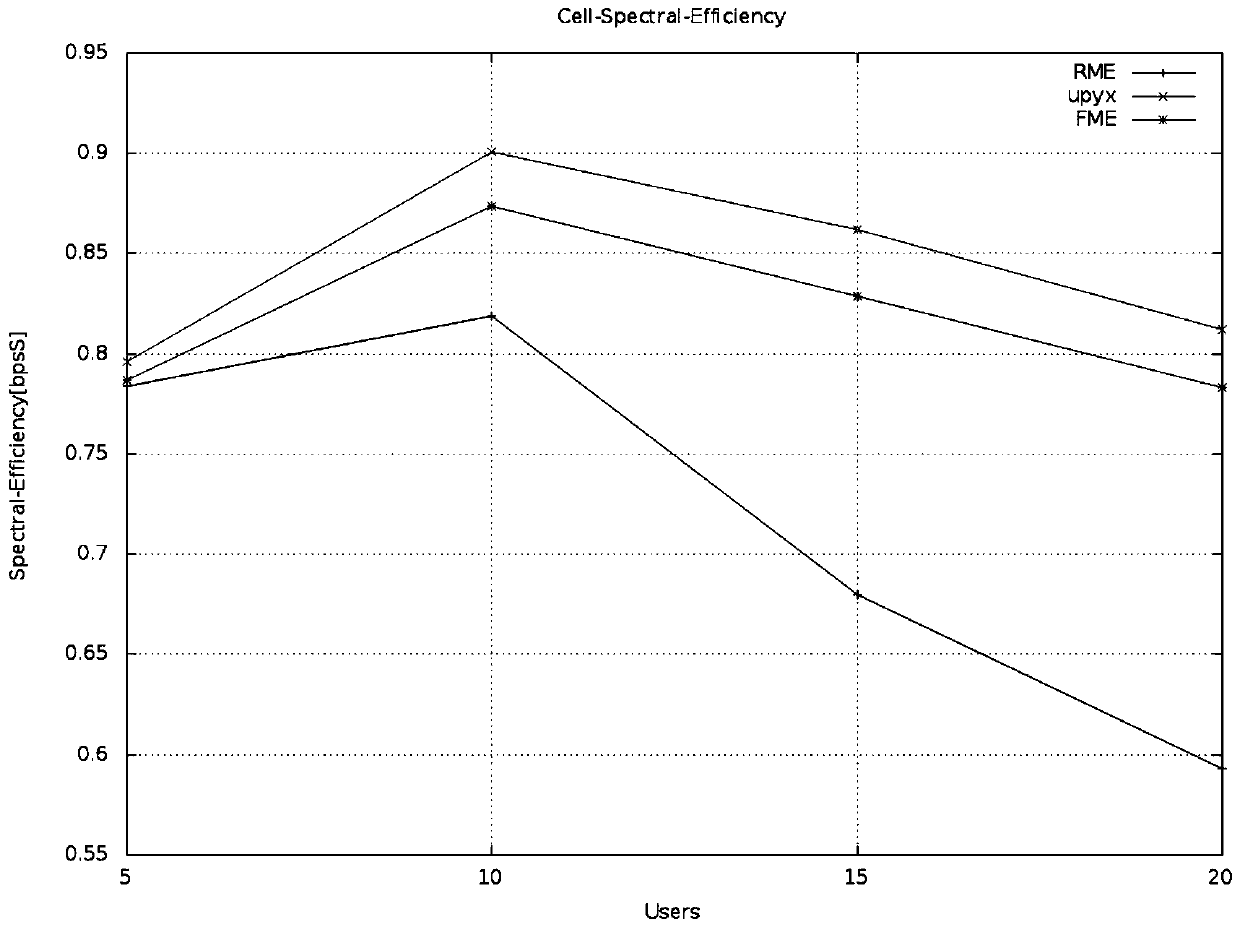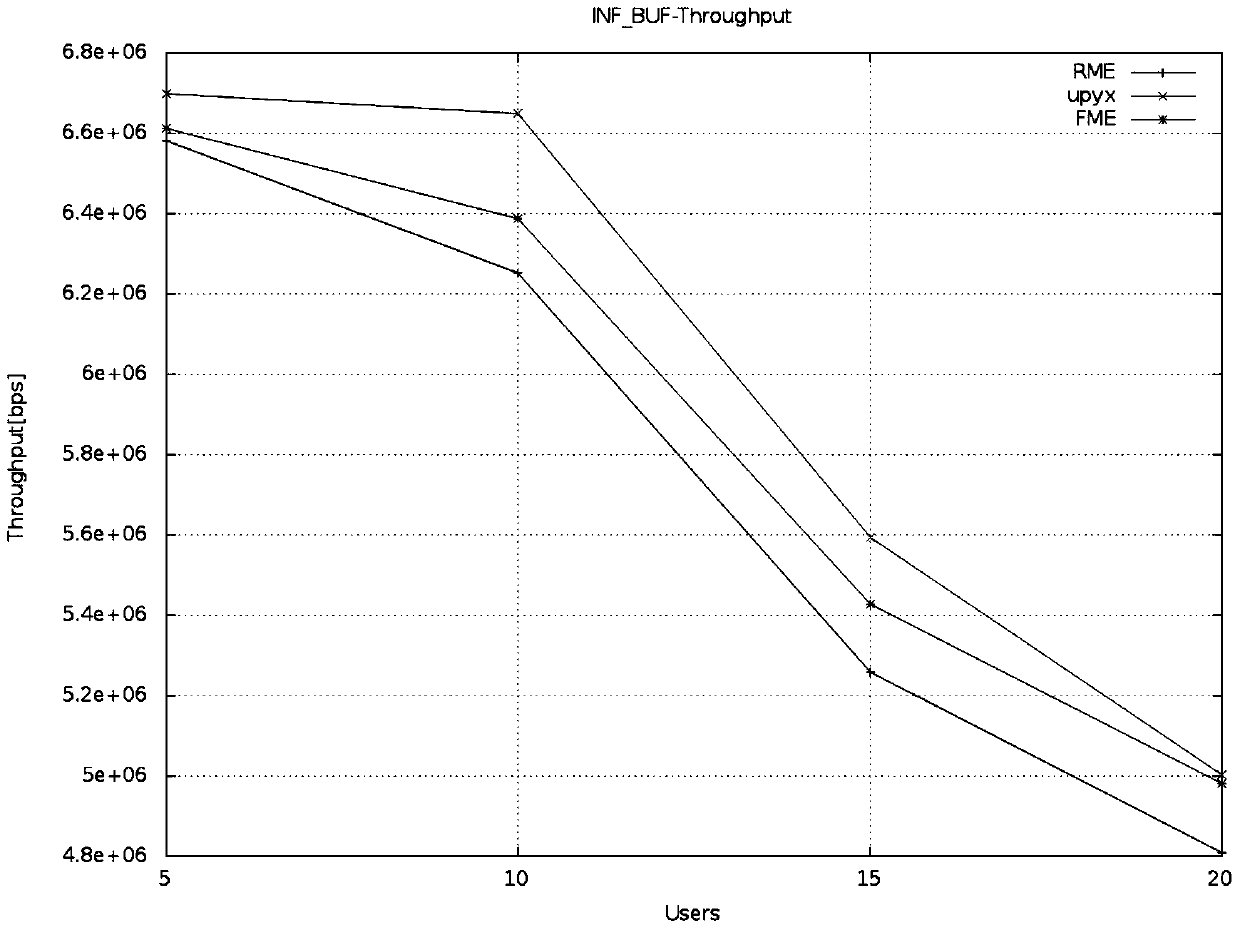td‑lte public network cluster multimedia service uplink resource scheduling method
A multimedia service and resource scheduling technology, applied in the field of resource scheduling, can solve problems such as no solution, low service throughput, and low spectrum utilization rate, and achieve the effect of improving spectrum utilization rate, throughput, and good performance
- Summary
- Abstract
- Description
- Claims
- Application Information
AI Technical Summary
Problems solved by technology
Method used
Image
Examples
specific Embodiment approach 1
[0028] Specific implementation mode one: as figure 1 As shown, this embodiment describes the TD-LTE public network cluster multimedia service uplink resource scheduling method:
[0029] Assume that in a cell network, the uplink bandwidth is divided into M RBs, and there is one base station and N active wireless users. The base station can allocate M RBs to the N users. In each transmission time interval, RBs satisfying multiple continuity constraints are allocated to the same user, but each RB can only be allocated to one user at most. We assume that the channel is in the case of Rayleigh fading, and the uplink transmission time interval is 1ms, which contains two 0.5ms time slots. Users of this system have different priorities and the system is dynamic, which is allocated to different users The resources need to be mapped in combination with the buffer sizes of different users.
[0030] Assume that in a cell network, the uplink bandwidth is divided into M RBs, and there is...
PUM
 Login to View More
Login to View More Abstract
Description
Claims
Application Information
 Login to View More
Login to View More - R&D
- Intellectual Property
- Life Sciences
- Materials
- Tech Scout
- Unparalleled Data Quality
- Higher Quality Content
- 60% Fewer Hallucinations
Browse by: Latest US Patents, China's latest patents, Technical Efficacy Thesaurus, Application Domain, Technology Topic, Popular Technical Reports.
© 2025 PatSnap. All rights reserved.Legal|Privacy policy|Modern Slavery Act Transparency Statement|Sitemap|About US| Contact US: help@patsnap.com



